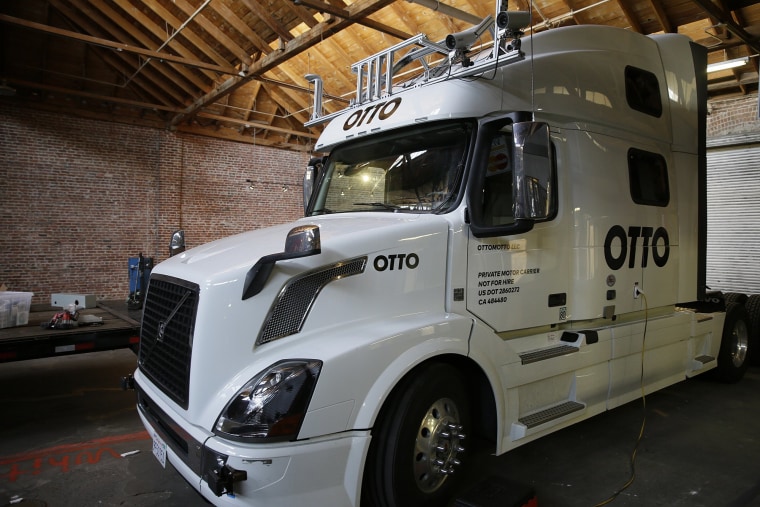Picture an 18-wheel truck barreling down the highway with 80,000 pounds of cargo and no one but a robot at the wheel.
To many, that might seem a frightening idea. But Anthony Levandowski, a robot-loving engineer who helped steer Google's self-driving technology, is convinced autonomous big rigs will be the next big thing on the road to a safer transportation system.
Read More: Google, Fiat Chrysler Team Up to Develop Autonomous Vehicles
Levandowski left Google earlier this year to pursue his vision at Otto, a San Francisco startup the he co-founded with two other former Google employees, Lior Ron and Don Burnette, and another robotics expert, Claire Delaunay.
Otto is aiming to equip trucks with software, sensors, lasers and cameras so they eventually will be able to navigate the more than 220,000 miles of U.S. highways on their own, while a human driver naps in the back of the cab or handles other tasks.
"Our goal is to make trucks drive as humanly as possible, but with the reliability of machines," Levandowski says.
Read More: Google Robot Car Bears 'Some Responsibility' in California Accident
That objective probably won't be reached for decades, despite the progress made with automated passenger vehicles over the past five years, predicts Steven Shladover, program manager for mobility at the University of California's Partners for Advanced Transportation Technology. He maintains that the technology is still a long way from being reliable enough to convince government regulators that a robot can be entrusted to steer a truck traveling at highway speeds without causing a catastrophic accident.
Now, Otto is looking for 1,000 truckers to volunteer to have self-driving kits installed on their cabs, at no cost, to help fine-tune the technology. The volunteer truckers would still be expected to seize the wheel and take control of the truck if the technology fails or the driving conditions make it unsafe to remain in autonomous mode, mirroring the laws governing tests of self-driving cars on public streets and highways.
Otto hasn't set a timetable for completing its tests, but hopes to eventually retrofit all the U.S. trucks on the road. That would encompass more than 4.7 million trucks, according to the American Trucking Associations.
